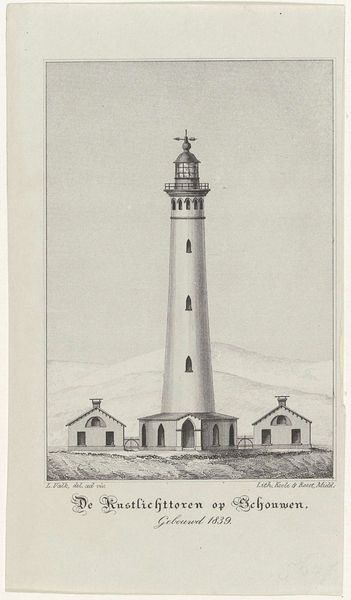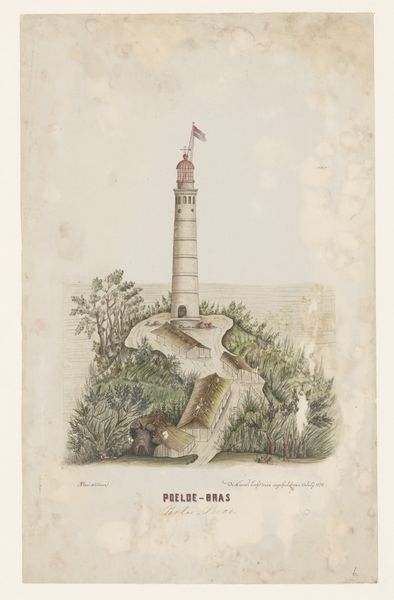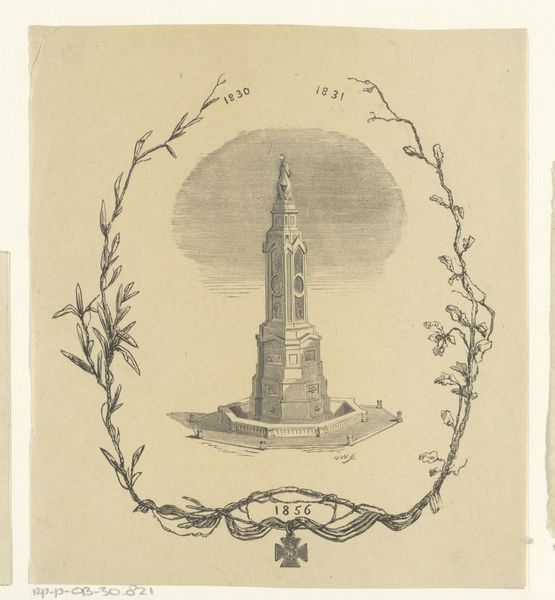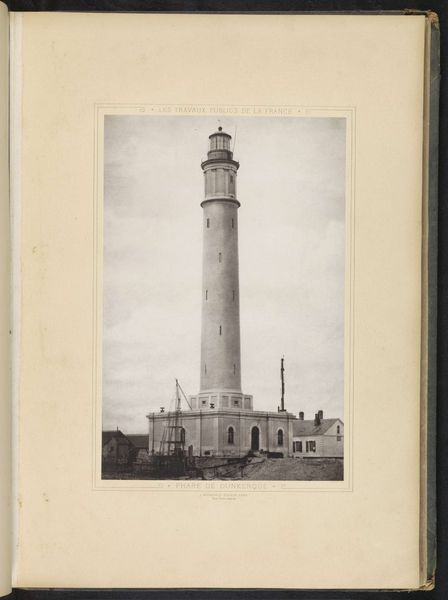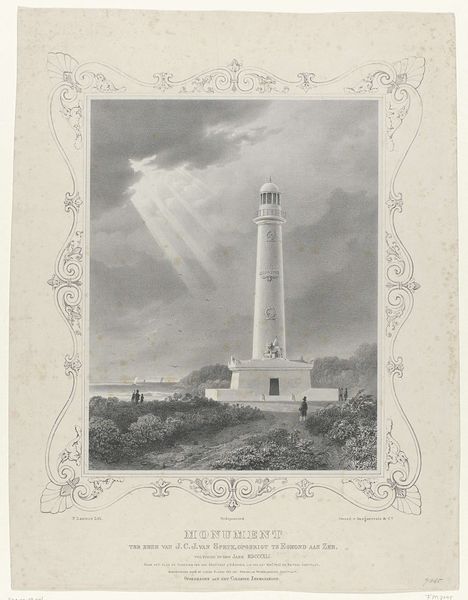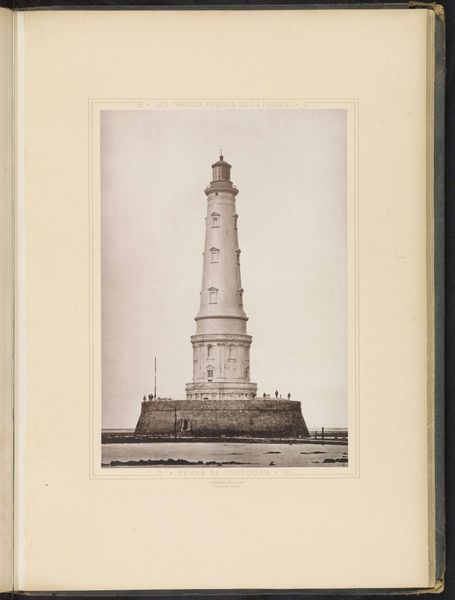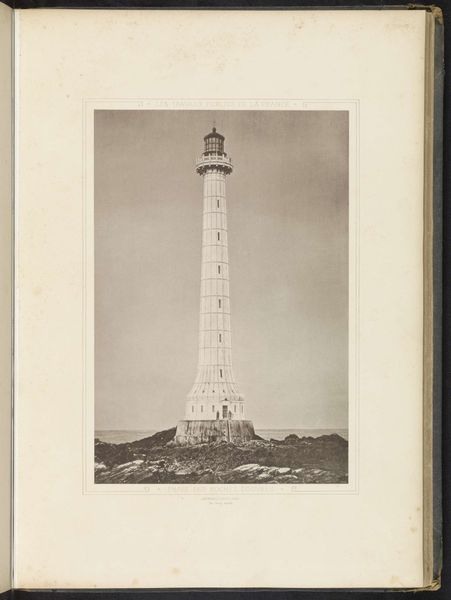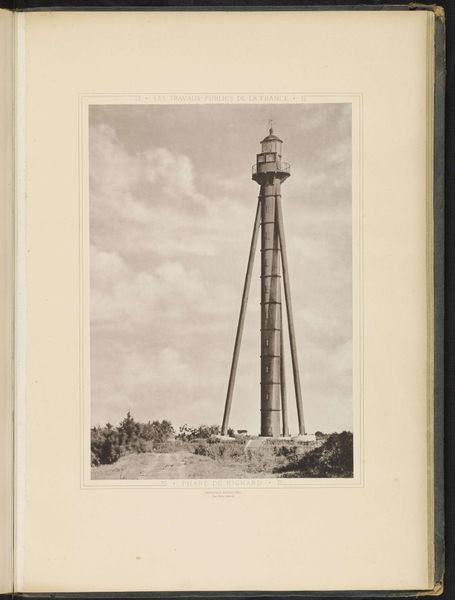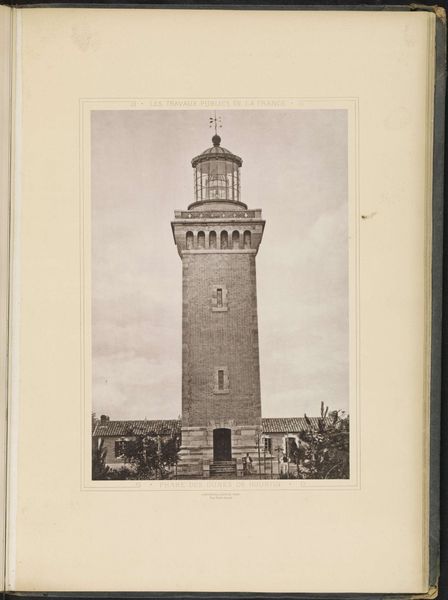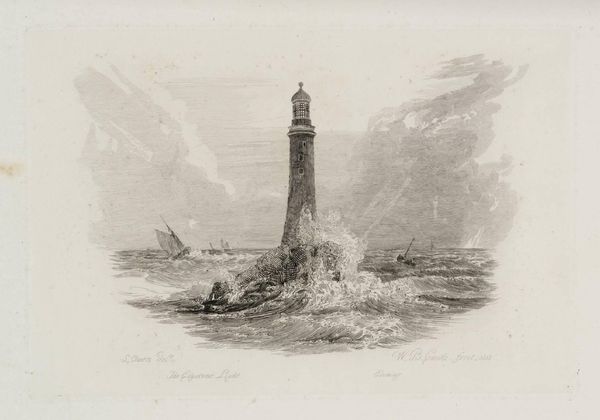
print, etching
#
neoclacissism
# print
#
etching
#
landscape
#
historical photography
#
19th century
#
line
#
word imagery
Dimensions: height 209 mm, width 134 mm
Copyright: Rijks Museum: Open Domain
Curator: This etching by L. Valk, created sometime between 1834 and 1874, is titled "Vuurtoren op het eiland Schouwen" which translates to “Lighthouse on the Island of Schouwen." It captures the lighthouse in a formal landscape. Editor: The subdued palette lends the scene a tranquil quality, almost melancholic. It's as if the lighthouse stands as a sentinel against a quiet, timeless landscape. Curator: Absolutely. It's important to recognize how maritime infrastructures of this period shaped regional economies and notions of Dutch identity, linking them to broader colonial trade networks and often overlooking the exploitation of maritime laborers. How are the materials in service to that historical understanding? Editor: Well, etching, as a reproducible medium, democratized the image of the lighthouse. Think about its accessibility—this print likely circulated among different classes. The linear precision of the etching emphasizes the lighthouse's structure, almost like a technical drawing highlighting engineering prowess. Curator: Precisely. The straight, neoclassical lines reflect the societal ideals of order and rationality prevalent at the time, reflecting Enlightenment values in architectural forms, and how it contrasts the power dynamics inherent in a seafaring nation’s claim to international waters. Editor: And consider the labor. The etching process itself, demanding skilled handiwork, creates value and meaning. Also, let's think about the production and deployment of lighthouses: Who was responsible for the constant maintenance? How were materials sourced? All crucial for the structure’s functionality. Curator: Those points definitely compel us to contemplate both the seen and unseen labor connected to this structure—raising necessary questions about the socio-economic dimensions. Also, I think the positioning of the lighthouse, stark against the island backdrop, might tell us how notions of control and navigation intersects with territorial ambitions of 19th-century empires. Editor: The light isn’t present. So, perhaps that missing illumination—and the action behind it, and work behind it—also has something important to tell us. Curator: Looking closer, it seems the island of Schouwen acted as a site where different threads of economy, labor and geographical command coalesced. An etching like this allows us to deconstruct what stories it projects, and equally, which it intentionally hides. Editor: Right, and to reflect on how an object rooted in materiality and human labor—even something as simple as an etching—holds layers of historical narratives waiting to be decoded.
Comments
No comments
Be the first to comment and join the conversation on the ultimate creative platform.
